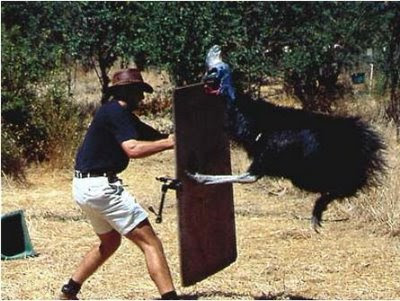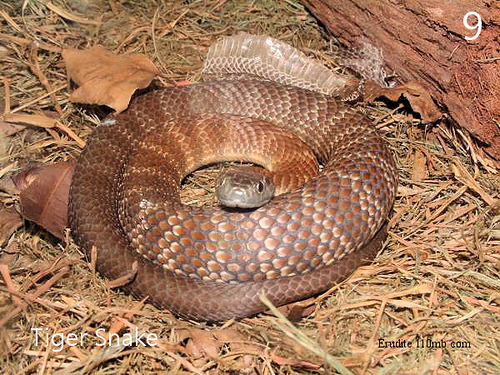Cassowaries (from the Malay name kesuari) are part of the ratite group, which also includes the Emu, rheas, ostriches, and kiwis, and the extinct moas and elephant birds. There are three extant species recognized today and one extinct:
Casuarius casuarius, Southern Cassowary or Double-wattled Cassowary, found in southern New Guinea, northeastern Australia, and the Aru Islands, mainly in lowlands.
Casuarius bennetti, Dwarf Cassowary or Bennett's Cassowary, found in New Guinea, New Britain, and on Yapen,mainly in highlands.
Casuarius unappendiculatus, Northern Cassowary or Single-wattled Cassowary, found in the northern and western New Guinea, and Yapen,mainly in lowlands.
Casuarius lydekki Extinct
Presently, most authorities consider the above monotypic, but several subspecies have been described of each (some have even been suggested as separate species, e.g., C. (b) papuanus).
Casuarius casuarius, Southern Cassowary or Double-wattled Cassowary, found in southern New Guinea, northeastern Australia, and the Aru Islands, mainly in lowlands.
Casuarius bennetti, Dwarf Cassowary or Bennett's Cassowary, found in New Guinea, New Britain, and on Yapen,mainly in highlands.
Casuarius unappendiculatus, Northern Cassowary or Single-wattled Cassowary, found in the northern and western New Guinea, and Yapen,mainly in lowlands.
Casuarius lydekki Extinct
Presently, most authorities consider the above monotypic, but several subspecies have been described of each (some have even been suggested as separate species, e.g., C. (b) papuanus).
 cassowaryc birds pictures world beautifull and dengerous birds
cassowaryc birds pictures world beautifull and dengerous birds.JPG) cassowaryc birds pictures world beautifull and dengerous birds
cassowaryc birds pictures world beautifull and dengerous birds cassowaryc birds pictures world beautifull and dengerous birds
cassowaryc birds pictures world beautifull and dengerous birdsFemales are bigger and more brightly coloured. Adult Southern Cassowaries are 1.5 to 1.8 metres (59–71 in) tall, although some females may reach 2 metres (79 in) and weigh 58.5 kilograms (129 lb).
All cassowaries have feathers that consist of a shaft and loose barbules. They do not have retrices (tail feathers) or a preen gland. Cassowaries have small wings with 5-6 large remeges. These are reduced to stiff, keratinous quills, like porcupine quills, with no barbs. A claw is on each second finger. The furcula and coracoid are degenerate, and their palatal bones and sphenoid bones touch each other.




























